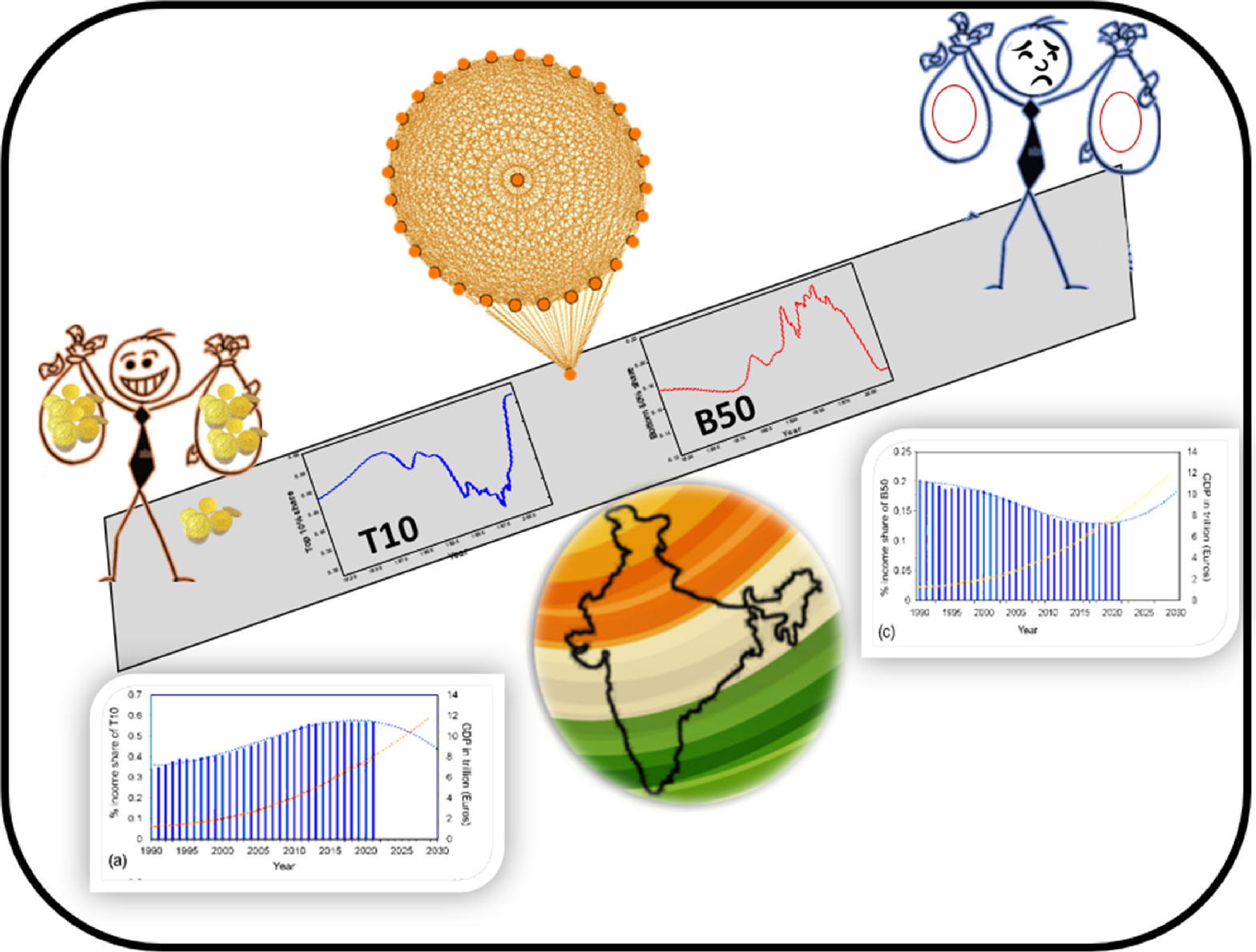https://doi.org/10.1140/epjp/s13360-024-05219-7
Regular Article
Income inequality analysis through complex network and nonlinear time series approaches: an Econophysics perspective
1
Laboratory for Environmental and Life Sciences, University of Nova Gorica, Vipavska 13, 5000, Nova Gorica, Slovenia
2
Department of Optoelectronics, University of Kerala, 695581, Trivandrum, Kerala, India
Received:
7
March
2024
Accepted:
26
April
2024
Published online:
18
May
2024
The present work delineates the potential of nonlinear time series, phase portraits, and complex network analyses in investigating and forecasting income inequality, taking India, the world’s most populous country, as an example. The multidimensional Econophysics analysis unravels the correlation of income inequality with gross domestic product (GDP), Gini coefficient, population, and income shares. The Lyapunov exponent (L) and sample entropy (S) analyses indicate the rising income inequality. By segmenting the data into three regions, the L analysis suggests a converging phase portrait and reducing income inequality. Self-similarity and Spearman correlation-based complex network analyses show strong data correlation confirming the results of L and S. The GDP, population, and income shares in region 3 (R3) exhibit a third-order polynomial relation with a high R2 value substantiating the forecast. The increasing GDP, decreasing income inequality, and retarded population growth in R3 suggest a bright future for the Indian economy. The study, thus, highlights the application of time series and complex network analyses in the emerging interdisciplinary field of Econophysics, representing a new frontier for enhancing our understanding of complex economic systems and guiding evidence-based policy interventions, as illustrated by the analysis of income inequality data.
Copyright comment Springer Nature or its licensor (e.g. a society or other partner) holds exclusive rights to this article under a publishing agreement with the author(s) or other rightsholder(s); author self-archiving of the accepted manuscript version of this article is solely governed by the terms of such publishing agreement and applicable law.
© The Author(s), under exclusive licence to Società Italiana di Fisica and Springer-Verlag GmbH Germany, part of Springer Nature 2024. Springer Nature or its licensor (e.g. a society or other partner) holds exclusive rights to this article under a publishing agreement with the author(s) or other rightsholder(s); author self-archiving of the accepted manuscript version of this article is solely governed by the terms of such publishing agreement and applicable law.





